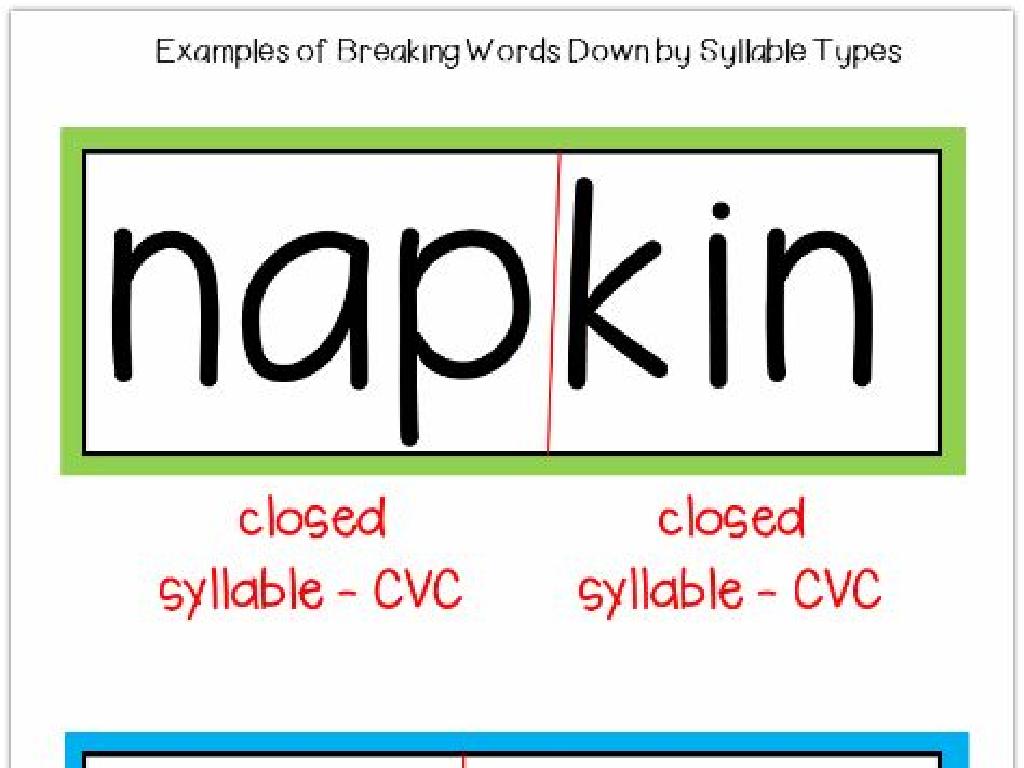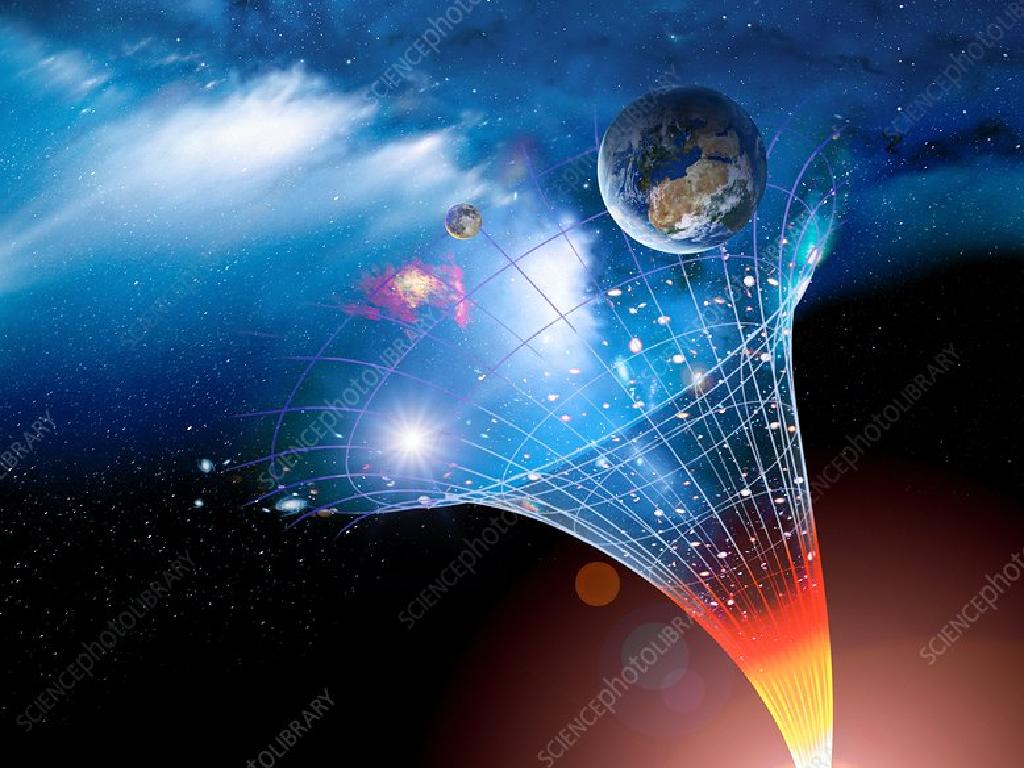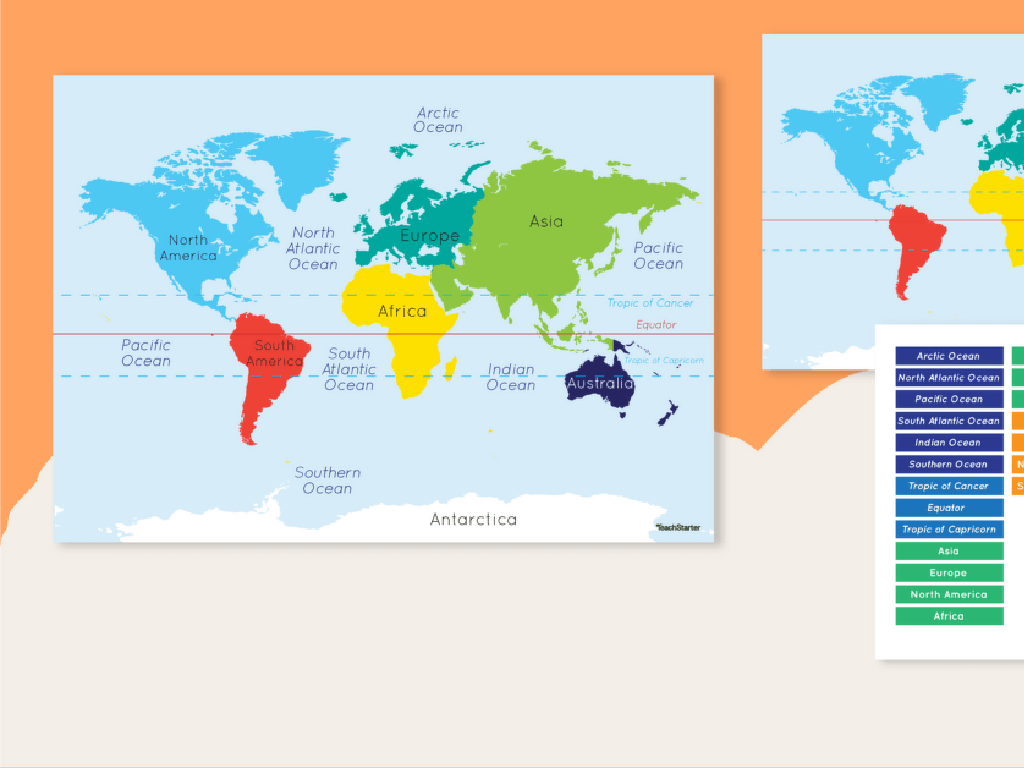Heating, Cooling, And Changes Of State: Vaporizing And Condensing
Subject: Science
Grade: Second grade
Topic: Changes Of State
Please LOG IN to download the presentation. Access is available to registered users only.
View More Content
Today’s Adventure: Heating, Cooling, & State Changes
– Explore states of matter
– Matter can be solid, liquid, or gas
– Effects of heating on matter
– Heating can turn ice to water, water to steam
– Effects of cooling on matter
– Cooling can turn steam to water, water to ice
– Observing vaporizing & condensing
– Vaporizing is liquid to gas, condensing is gas to back to liquid
|
This slide introduces the concept of states of matter and how they change with heating and cooling. Begin by explaining the three states of matter: solid, liquid, and gas. Use relatable examples like ice (solid), water (liquid), and steam (gas) to illustrate these states. Discuss how adding heat to a solid can melt it into a liquid and further heating can turn it into a gas, which is vaporizing. Conversely, removing heat from a gas can condense it into a liquid and further cooling turns it back into a solid. Encourage students to think of examples from daily life, such as water boiling to form steam or frost forming on a window. This will help them understand the processes of vaporizing and condensing.
Exploring States of Matter
– Matter makes up everything
– Matter comes in 3 forms
– Solid like ice, liquid like water, gas like steam
– Solids, liquids, and gases
– Examples of each state
– Ice cube (solid), milk (liquid), breath on a cold day (gas)
|
This slide introduces the concept of matter and its different states to second-grade students. Begin by explaining that everything they can touch and see is made of matter. Matter can exist in three main forms: solid, liquid, and gas. Use relatable examples such as ice, water, and steam to illustrate the states of matter. Encourage students to think of other examples and discuss how the same substance, like water, can change between these states. This will set the foundation for understanding more complex concepts like vaporizing and condensing.
Heating Things Up!
– Heating turns ice into water
– Ice becomes water when it gets warm
– Observing ice melting
– We’ll see ice change to water in class!
– Heat makes things melt or vaporize
– Melting is becoming liquid, vaporizing is becoming gas
– Understanding melting and vaporizing
|
This slide introduces the concept of how heating affects the states of matter, specifically how it causes ice (a solid) to change into water (a liquid) and potentially into vapor (a gas). Start by explaining that adding heat to ice makes it warm and turns it into water. During the class, demonstrate this by observing ice as it melts. Explain that heating can cause different materials to melt (turn from solid to liquid) or vaporize (turn from liquid to gas). Use the demonstration as a visual aid to help students understand the process of melting and vaporizing. Encourage students to think about other examples of melting and vaporizing that they’ve seen in their daily lives.
Cooling Things Down
– Freezing water in the freezer
– Water turns solid when it’s cold enough
– Watching water become ice
– Ice is just frozen water!
– Cooling causes freezing
– Like water turning to ice, other things freeze too
– Cooling can also cause condensing
– When air cools, it can change to liquid, like dew on grass
|
This slide is aimed at helping second-grade students understand the effects of cooling on the state of matter, particularly water. When water is placed in the freezer, it gets cold enough to change from a liquid to a solid state, which we see as ice. This process is called freezing. Similarly, cooling can cause gases to condense into liquids, which is why we sometimes see water droplets on the outside of a cold glass. The concepts of freezing and condensation are fundamental to understanding how temperature affects the states of matter. During the class, demonstrate these concepts with simple experiments, such as freezing water to make ice cubes or showing condensation with a cold bottle.
Vaporizing: Liquid to Gas
– Vaporizing makes a gas
– Boiling water becomes steam
– When water boils, it changes from liquid to gas, which we see as steam
– Kettle whistles with steam
– The sound of a kettle whistling is caused by steam escaping
– Steam rises from pots
– Watching steam come off a pot is seeing vaporizing in action
|
This slide introduces the concept of vaporizing to second-grade students. Vaporizing is the process of turning a liquid into a gas. A common example is boiling water turning into steam. Use everyday examples like a kettle whistling or steam rising from a pot of boiling water to illustrate this change of state. Explain that when water reaches a certain temperature, it boils and becomes steam, which is a gas. This is vaporizing. Encourage students to think of and share other examples of vaporizing they’ve observed in their daily lives.
The Magic of Condensing: Gas to Liquid
– Condensing: Gas turns to liquid
– Steam to water is condensing
– Like when you see steam from a kettle turn into water droplets!
– Dew on grass: morning magic
– Notice the tiny water drops on grass? That’s condensing overnight!
– Water droplets on a cold glass
– Ever see a glass sweat? That’s condensing from the air!
|
This slide introduces the concept of condensation to second graders. Condensation is the process where a gas changes into a liquid when it cools down. An everyday example is when steam from a kettle cools and turns back into water droplets. This can be observed with real-life examples such as dew forming on grass in the early morning or water droplets appearing on the outside of a cold glass on a hot day. These examples will help students relate the concept to their daily experiences. Encourage the students to share their own experiences of condensation and discuss why they think it happens.
Let’s Experiment with Vaporizing and Condensing!
– Observe vaporizing and condensing
– We’ll heat water to see it vaporize, then cool to see it condense
– Safety is important!
– Always protect your eyes and clothes during science experiments
– Wear your goggles and aprons
– Exciting experiment ahead
|
This slide introduces a hands-on experiment for the students to understand the concepts of vaporizing and condensing. Before beginning, emphasize the importance of safety and proper protective gear. The experiment will involve heating water to see it change from liquid to gas (vaporizing) and then cooling the vapor to see it change back to liquid (condensing). This visual demonstration helps solidify the students’ understanding of these physical changes. Prepare a step-by-step guide for the experiment, ensuring that all safety measures are in place. Have multiple stations set up if possible, so small groups can conduct the experiment simultaneously. Provide assistance as needed and encourage observations and discussions about what they see happening.
Class Activity: Magic with Ice and Steam!
– Heat ice to create water and steam
– Cool steam to get water and ice
– Observe changes and record them
– Use your science journal to note the changes in state from solid to liquid to gas and back.
– Discuss observations with the class
– We’ll talk about what we saw and learned.
|
This class activity is designed to demonstrate the changes of state from solid to liquid to gas and then back to solid. Provide each student or group with ice cubes and a safe heat source to melt the ice into water and then heat further to create steam. Next, have them cool the steam (using a cold surface or container) to condense it back into water and freeze it to make ice again. Ensure safety precautions are in place for handling heat. Students should use their science journals to record the temperature changes, physical state changes, and any other observations. After the activity, facilitate a discussion where students can share their findings and solidify their understanding of vaporization and condensation.
Wrapping Up: Heating, Cooling, and State Changes
– Recap: Heating and Cooling Effects
– Heating can melt ice to water, cooling can freeze water to ice.
– Daily Life Applications
– We use heating to cook food and cooling to keep food fresh.
– More Examples: Vaporizing and Condensing
– Like boiling water for vapor, dew on grass for condensing.
– Understanding Changes of State
|
In this concluding slide, we aim to reinforce the concepts learned about how heating and cooling can cause matter to change states, specifically through vaporizing and condensing. We’ll revisit the key points of how these processes are part of everyday life, such as cooking and refrigeration. Encourage the students to think of additional examples they’ve observed in their environment, like steam from a hot shower (vaporizing) or water droplets on a cold soda can (condensing). This reflection helps solidify their understanding and appreciation of the science behind common occurrences. The discussion will also serve to connect classroom learning with real-world observations, fostering a deeper interest in science.
Homework Challenge: The Water Cycle
– Draw the water cycle at home
– Show vaporizing and condensing
– Vaporizing is when water turns into vapor. Condensing is when vapor turns back into water.
– Use colors to show different parts
– Blue for water, white for vapor, grey for clouds.
– Share your artwork in class
|
This homework assignment is designed to reinforce the concepts of vaporizing and condensing within the water cycle. Encourage the students to think about how water changes from liquid to gas and back again, and to illustrate these processes in their drawings. Remind them to include the sun, which provides the heat for vaporization, and clouds, where condensation occurs. In class the next day, provide time for students to share their drawings and discuss the different parts of the water cycle they’ve illustrated. This will help them understand the continuous movement of water on, above, and below the surface of the Earth.






